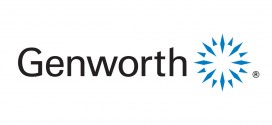The most successful life insurance agents recognize that product changes over the years are a direct reflection of prevailing economic conditions and the way the public perceives them. In other words, life insurance, just like so many other products, is a child of its times. Understanding the marketplace dynamics––and how they can change––helps those in life insurance sales to work more effectively with clients.
As we all know, Whole Life had been the staple product for permanent life insurance sales for more than 100 years. That changed in 1979, when a revolutionary product was introduced to the U.S. life insurance marketplace that would shake the industry’s foundation.
Universal Life (UL) was presented as a low-cost flexible premium product that allowed permanent insurance buyers to divert substantial funds, which previously were allocated to pay for a Whole Life policy, to investments. As the market for UL grew, more and more companies began offering lower cost plans with more “bells and whistles,” adding greater flexibility to an already flexible product.
That was only the beginning. Variable Universal Life (VUL) was the next exciting product to grab the attention of both life agents and consumers, providing additional competition for Whole Life. Its unique combination of tax advantages, combined with the ability to access and trade from a basket of successful money managers who had well-published successes as mutual fund managers, gave this product a strong appeal. In most cases, it was used as a vehicle for tax-free cash accumulation, tax-free access and a stepped-up basis at death, which means the proceeds are paid income tax-free.
The roaring stock market propelled the sales of VUL through the 1980s and 1990s with many of the major life insurance companies adopting this product as an important component of their product portfolios. At the same time, a number of life insurance companies demutualized and became stock companies, either shedding or diminishing their captive field forces, and with the success of the equity markets, consumers moved away from the historically more conservative life insurance products. With buyers more comfortable with risk and a life insurance sales force in transition from captive to independent, agents were in a somewhat weakened position and had less motivation to make the case for the merits of Whole Life.
Over the last 15 years or so, the original generations of UL have come back to the industry to give it a “black eye,” as interest rates steadily declined and plans failed to perform as expected. In some cases, clients expected their premiums to vanish in a limited number of years, while others assumed that their “low premiums” would be sufficient to carry coverage beyond their life expectancy. In most cases, clients were disappointed when these expectations were never met. With increasing life expectancies, policyholders were concerned about outliving their life insurance.
Guaranteed Universal Life (GUL) was designed to allay these marketplace fears. It offered guaranteed premiums and a guaranteed death benefit at the expense of cash value accumulation and access. Over time, GUL has become an increasingly expensive product since life insurance companies are unable to invest the premium dollars at a sufficient return in the current low interest rate environment. To protect themselves, many companies have either imposed premium restrictions or dropped out of the marketplace. However, some companies are able to compete and deliver a product that can serve the needs of the right client.
The story continues with Indexed Universal Life (IUL), the latest UL product to take the market by storm. It has an appeal with life agents since they are not required to have securities licenses to sell it. How long that will last is a question, since some in the financial industry are seeking more control through legislation.
It appears Universal Life’s popularity as the industry’s product of choice has peaked in favor of the conservative security of Whole Life, a result of a sideways stock market since the “dotcom bubble” of 2000 to the present.
The “flash crashes,” the stock market meltdown starting in 2008, a very deep recession and a drawn-out tepid recovery have left many consumers either in a weakened financial condition or in a state of shock. It has had an immense impact on the public’s investing and insurance-buying behavior.
Consumers want to protect their families, as always, but now they seem to embrace and better understand the unique ability of the life insurance industry to serve them in ways not otherwise available to them. Buyers still want what they have always wanted. They want guarantees and recognize that the returns offered by a Whole Life policy represent a compelling and appropriate foundation for their future financial security. Many have become risk-averse and are now focused on true savings with a guaranteed return and are less willing to gamble with the volatile markets.
From the buyer’s perspective, it is more prudent to purchase a product that offers a guaranteed return, as well as liquidity. Whole Life makes it possible to use the plan as collateral, borrow from the cash values, and surrender dividends or receive them each year in cash. With its access to the cash values, this plan gives the buyer greater flexibility and is another reason for the renewed interest in Whole Life. They know that the premiums are part of their balance sheet and that they can extricate themselves from the insurance or investment with their money entirely intact without market risk.
Access to the principal gives Whole Life a revitalized appeal. The resurgence of this product stands in stark contrast to the recent past when it was entirely unfashionable to buy a product with a lower expected return than what the stock market and even real estate investing were offering.
As Whole Life has the ability to meet the needs and expectations of many consumers, here are some common situations where it can be used effectively:
- A Guaranteed Universal Life alternative using a blend of Whole Life and Term Life.
- A retirement supplement using Whole Life to increase income while providing a pre-retirement death benefit.
- A Section 162 bonus using the business checkbook for executives.
- Legacy planning or education planning, leveraging a gift from grandparents to create a legacy for college.
- Private split-dollar as a solution to allow for minimizing gift taxes.
- Be your own banker: use as a nest egg and source of liquidity rather than borrowing on a 401(k) account.
Whole Life, once again, has become a product that should be included in the mix when considering clients’ life insurance needs. Planners should become familiar with the product, its improved chassis and riders, as well as its advantages over Universal Life for a large segment of the insurance-buying market.
 AgenteNews Insurance Producer's Online Resource
AgenteNews Insurance Producer's Online Resource




